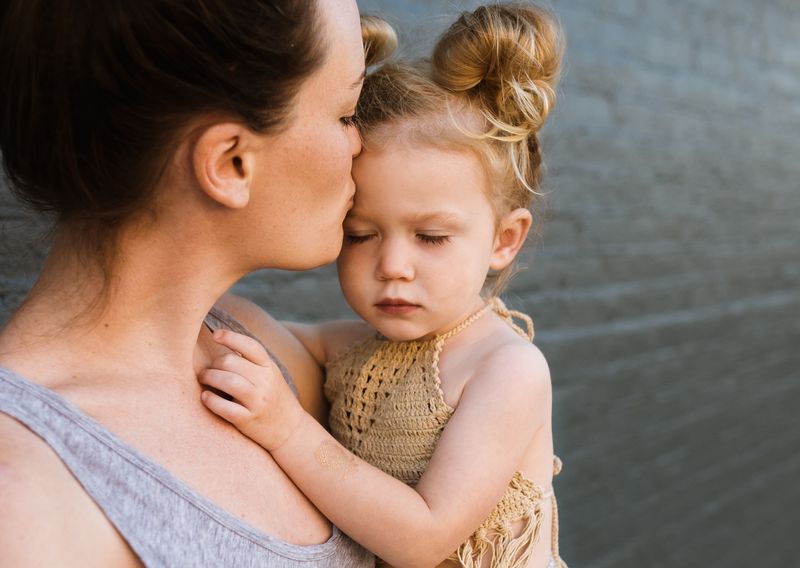10 Things Your Child’s Tantrum Might Actually Be Saying

Tantrums can transform your sweet child into a whirlwind of emotions in seconds. Behind those tears, screams, and floor-pounding fits lies communication your little one hasn’t mastered yet. Understanding what your child is really trying to say during these meltdowns can help both of you navigate these stormy moments with more patience and compassion.
1. I’m Just Plain Tired

Exhaustion turns even the most easygoing kids into emotional volcanoes. When little bodies are running on empty, their ability to cope with everyday frustrations plummets dramatically.
Parents often miss the subtle signs of fatigue before the full meltdown begins. Those eye rubs, yawns, and increased clinginess are early warning signals.
Creating consistent sleep routines helps prevent these energy-depleted outbursts. An extra nap, earlier bedtime, or simply a quiet moment of rest can be the difference between harmony and hurricane-force emotions.
2. I Can’t Express My Big Feelings

Little ones feel big emotions, sometimes even bigger than ours—but without the words to explain, those feelings often come out as tears, screams, or tantrums.
A tantrum might erupt because your child feels disappointed, jealous, worried, or overwhelmed but can’t find words for these complex emotions. The resulting meltdown is their primitive emotional release valve.
Helping kids build emotional literacy prevents many outbursts. Regularly naming feelings during calm moments gives them tools to communicate needs before reaching boiling point.
3. I Need Some Control

In a world run by adults, children have little control over daily decisions. Tantrums are often their way of asserting independence.
That screaming fit about wearing the green shirt instead of the blue one isn’t really about clothing preferences. It’s about asserting independence in one of the few areas they can.
Offering age-appropriate choices throughout the day satisfies this deep need for autonomy. ‘Would you like apple slices or grapes?’ gives them decision-making power without overwhelming them with too many options.
4. My Routine Got Disrupted

Kids thrive on predictability – it makes their world feel safe and manageable. When routines suddenly change, their sense of security can crumble, triggering meltdowns that seem disproportionate to adults.
That epic tantrum might have erupted because you took a different route home or because grandma served lunch on the ‘wrong’ plate. These seemingly minor changes can feel enormously unsettling to young children.
Preparing kids for transitions and changes helps prevent these disruption-based tantrums. Simple warnings like ‘Five more minutes until we leave the playground’ give them time to mentally adjust to upcoming changes.
5. I’m Hungry or Thirsty

Blood sugar dips can transform your normally cheerful child into an emotional wreck within minutes. Their developing bodies burn energy rapidly, making them especially vulnerable to hunger-induced mood swings.
The meltdown in the grocery store might simply be their body’s desperate signal that it needs fuel. Young children often don’t recognize hunger until they’re already irritable and overwhelmed by it.
Carrying healthy snacks and scheduling regular eating times prevents many hunger-triggered tantrums. Staying ahead of hunger pangs with protein-rich options keeps blood sugar stable and emotions more manageable throughout busy days.
6. I’m Overstimulated

Young nervous systems get overwhelmed easily. Bright lights, loud noises, crowds, and busy environments bombard children with more sensory input than they can process, often resulting in meltdowns.
That sudden tantrum at the busy birthday party or crowded store might be your child’s way of communicating sensory overload. Their brain is essentially saying ‘too much!’ in the only way it knows how.
Creating regular quiet periods throughout the day helps sensitive children decompress. A cozy reading nook or calm-down corner gives them space to reset when the world becomes too intense for their developing sensory systems.
7. I Need Your Attention

Children crave connection with their caregivers above almost everything else. When they feel disconnected or ignored, tantrums become powerful tools to recapture your undivided attention.
The timing isn’t coincidental – those meltdowns often happen precisely when you’re on the phone, cooking dinner, or talking with another adult. They’ve learned that big emotions get big responses from busy parents.
Scheduling regular one-on-one time fills their attention bucket before it empties completely. Even 15 minutes of focused play where you put away devices and truly engage can prevent many attention-seeking tantrums throughout the day.
8. I’m Testing Boundaries

Testing limits is how children learn about their world and their place in it. Those repeated tantrums over the same rules aren’t defiance – they’re experiments to discover if boundaries remain consistent.
When your child throws themselves on the floor after hearing ‘no cookies before dinner’ for the tenth time, they’re checking if the rule still applies. This boundary-testing is actually a crucial part of their developing understanding of how society works.
Responding with calm consistency teaches them that rules remain steady regardless of emotional reactions. This security helps them gradually internalize appropriate behavior without needing constant external enforcement.
9. I Don’t Feel Well

Physical discomfort often manifests as behavioral problems in young children. That sudden increase in tantrums might signal an ear infection, sore throat, or other health issue they can’t articulate yet.
Children experiencing pain or illness lack the self-awareness to identify what’s wrong. Instead, their overall tolerance for frustration plummets, making normal challenges feel insurmountable.
Checking for physical causes when behavior suddenly changes helps address the root problem. Teething, growth spurts, and even constipation can dramatically affect behavior long before other symptoms become obvious to parents.
10. I’m Learning Through This Experience

Tantrums serve an important developmental purpose – they’re teaching your child about emotional regulation through real-time practice. Each meltdown is actually a learning opportunity for their developing brain.
During these emotional storms, neural pathways form that will eventually help them manage feelings independently. Your responses during these moments become their internal template for self-soothing later in life.
Staying calm while acknowledging their feelings models healthy emotional processing. ‘I see you’re feeling frustrated’ validates their experience while showing them that big emotions can be named and managed rather than feared or suppressed.

Comments
Loading…